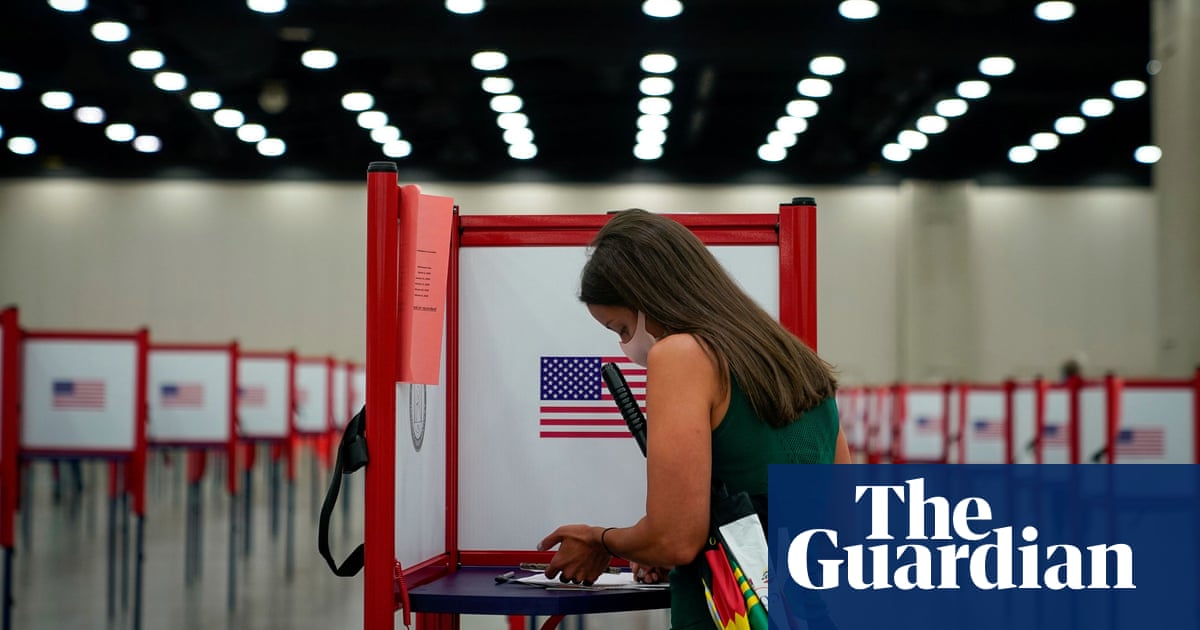
As Kentucky voters wait to see which Democrat will challenge Mitch McConnell this fall, Americans are quickly realizing there’s a new normal for elections during the pandemic: we’re not going to know the winner on election night.
Over the last few months, states across the US have seen record numbers of their voters cast their votes by mail as states expand and encourage its use during Covid-19. It’s a change that means election officials are going to need more time to count votes as ballots flood election offices on election day and afterwards – some states count ballots postmarked by election day if they arrive in the days after the election.
There are worries about how the US will react to delayed results during November’s hotly contested presidential election. Americans are used to the spectacle of election night – anchors on major networks breathlessly analyze and call races and the evening culminates in a late night speech from victorious candidates. That’s very unlikely to happen this year – Americans are going to be waiting a while to find out whether or not Donald Trump will be president for another four years.
“The delays during the primaries in getting election results can teach the media and voters a valuable lesson: processing and counting absentee ballots takes more time than tabulating in-person votes,” said Richard Hasen, a law professor at the University of California, Irvine who specializes in elections. “The public, despite the inevitable angst over the results of November’s election, needs to be prepared for the media to say that the presidential race is ‘too early to call’ if it is close in the electoral college.”
In Kentucky, the state’s top election official projected turnout in the primary would exceed 1.1m votes. But that total includes just 271,000 who voted in person either early or on election day. Around 868,090 people requested absentee ballots in the state and as of Wednesday, 604,984 had been returned.
Many local clerks in Kentucky are waiting until 30 June to release full results because the state is allowing ballots to be counted as long as they are postmarked by the day of the election and arrive by Saturday. In New York, which also held a primary Tuesday, valid absentee ballots will probably continue to arrive over the next several days and officials won’t start counting them until next week.
Trump, already making baseless claims about mail-in fraud, could use such a delay to call the election illegitimate if he loses in November, some worry. A particularly concerning scenario is one where Trump appears to be ahead based on the in-person results released on election night and then falls behind as more absentee ballots come in. A foreshadowing played out in 2018, when Republicans led in several congressional races in California on election night and then ultimately lost those races weeks later as more mail-in ballots were counted (California is one of the states that allows ballots to count if they are postmarked by election day and arrive in the days after).
“Everyone needs to be on guard against candidates that might prematurely declare victory before all the votes are counted,” Hasen said. “I’m especially worried Trump might try to do so, and to cast doubt without any evidence on later-counted ballots as somehow fraudulent.”
Counting mail-in ballots is an arduous task that can differ across states. Several key swing states – including Wisconsin, Michigan and Pennsylvania – have laws in place that prohibit election officials from counting mail-in ballots until election day. Officials say those measures are unworkable given the flood of mail-in ballots expected in November and will put election workers under enormous pressure to count ballots quickly. There is a push in Pennsylvania – which took more than a week to count ballots from its 2 June primary – and Michigan to get state lawmakers to allow officials to start processing the ballots earlier.
Some states allow election officials to begin to begin counting ballots before election day, allowing them to report unofficial results on election night. In Oregon, which conducts its elections entirely by mail, officials can begin counting ballots a week before the deadline to get them in. That head start allows election offices to keep up with an influx of ballots as election day approaches, said Andrea Chiapella, a spokesperson for the Oregon secretary of state’s office. In Florida, where many people vote by mail, election officials can begin counting ballots 22 days ahead of election day. Florida’s governor, Ron DeSantis, a Republican, issued an executive order this month allowing officials to start counting ballots even earlier.
In April, Hasen and a consortium of election experts offered two key recommendations on how to preserve confidence in the election even as it takes a while to count absentee votes. They wrote that states should bring transparency to the absentee ballot process and take steps to make sure ballots are counted as quickly as possible. Media organizations, they wrote, need to set an expectation for the public that there won’t be a winner on election night and should work on teaching people about the processes in place to count ballots.
“These efforts are likely to provide the strongest defense against misinformation about the electoral process or false allegations of widespread voter fraud, which media outlets should of course also seek to avoid amplifying,” they wrote in their report.
Source: US Politics - theguardian.com



